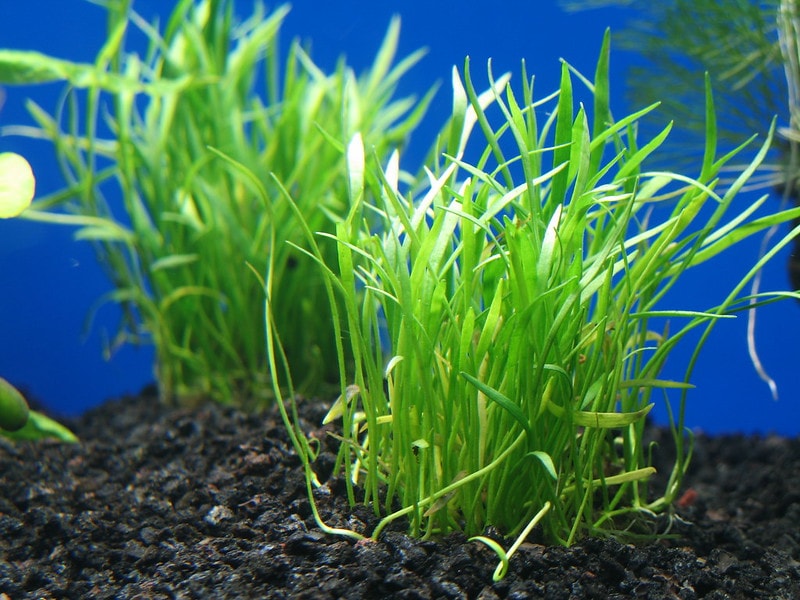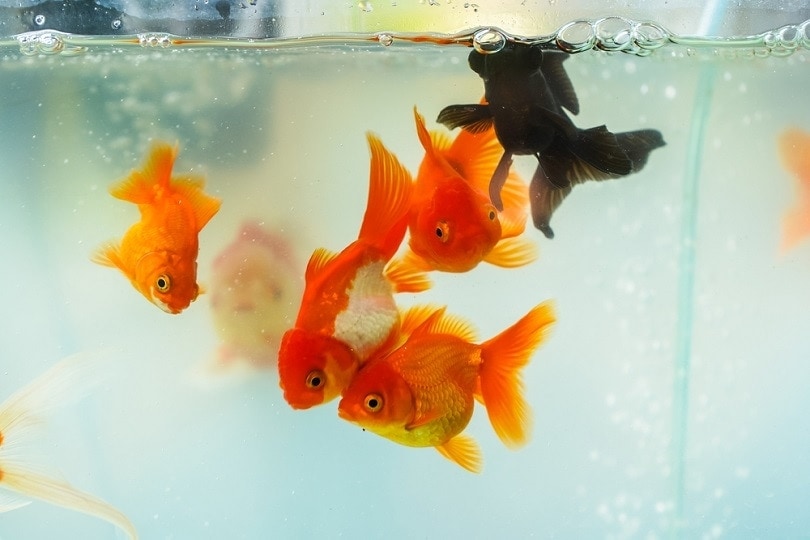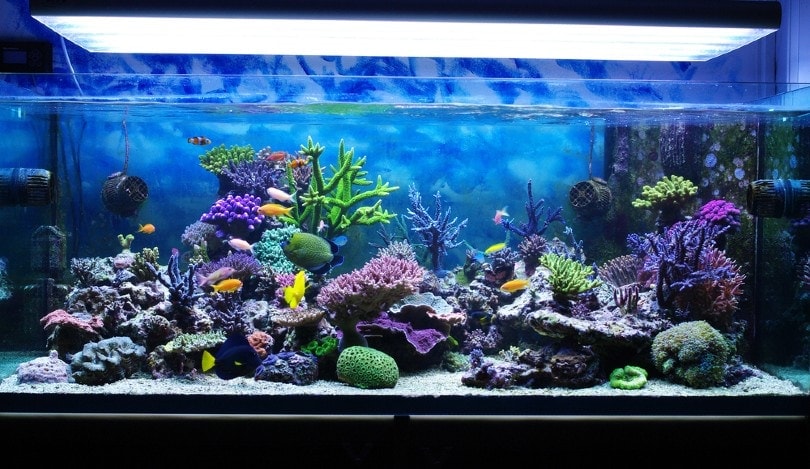Does An Axolotl Lay Eggs? Vet Reviewed Facts & FAQ

Updated on
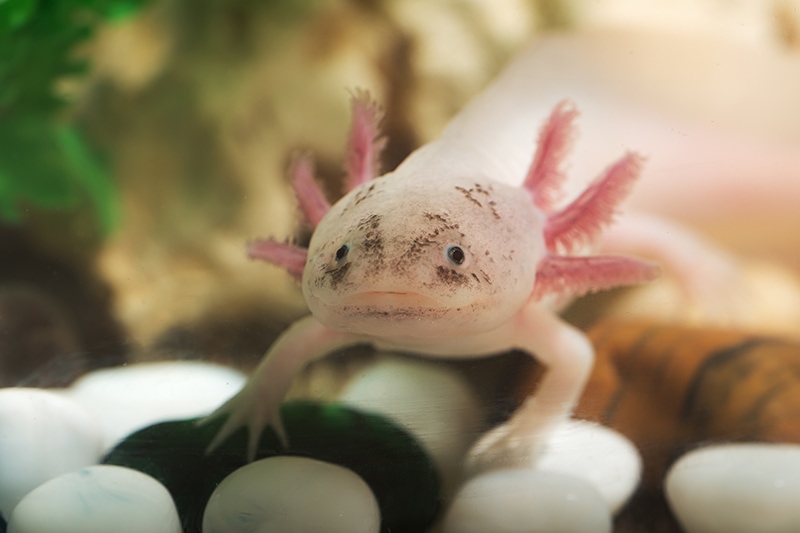
Click to Skip Ahead
Axolotls are unique creatures that have been causing a stir in the animal world for ages, but do they lay eggs? The answer is yes, axolotls do indeed lay eggs. Sometimes called the Mexican walking fish, these cool creatures lay their eggs in water.
To get the lowdown on axolotls—let’s start with the basics. These creatures are known for their ability to regenerate their limbs, spinal cords, and even their hearts. Their regenerative abilities make them a popular choice for scientific research.
How Often Do Axolotls Lay Eggs?
These smiley little creatures typically lay eggs once a year, but they might lay more than this occasionally. This will also depend on how old they are, if they are healthy or not, and if their water is on point. So, if you think you want to breed these cute critters, you need to make sure you know what you’re doing as it isn’t easy.
Unlike other amphibians that move onto land to lay eggs or spawn, axolotls stay in their aquatic habitat and lay their jelly-like eggs. Unlike other amphibians that move onto land to lay eggs or spawn, axolotls stay in their aquatic habitat and lay their jelly-like eggs. When axolotls spawn, they lay several hundred eggs, which they spread throughout their habitat. Each spawn will later hatch into larvae, with fully formed external gills. The hatching process can take anywhere from 10 to 14 days or more, depending on factors like water temperature and oxygen levels.

Why is it Difficult to Breed Axolotls in Captivity?
Breeding axolotls is challenging. They need some specific conditions to breed right. Cool, fresh water with hiding spots and leafy plants for laying eggs. If the water’s too warm or dirty, it’s a total no-go for their reproductive health. Another thing to keep in mind is that axolotls have a pretty unique reproductive cycle that’s not easy to control in captivity. Even if you’re a talented fishkeeper—axolotls have a one-of-a-kind process when it comes to breeding, and it’s not easy to imitate in a tank. They need the right amount of light and fluctuating water temperatures.
Do Axolotls Pair Up Easily?
Axolotls can be pretty choosy when it comes to finding a mate. Plus, they can be prone to health issues like fungus and parasites. But you can still breed them if you take good care of them—just make sure to work with a pro and give your axolotls a proper setup, healthy food, and regular checkups.
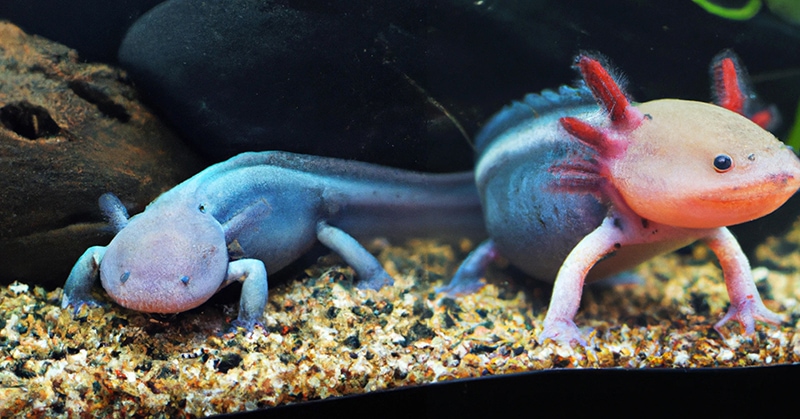
How Can You Tell if Axolotl Eggs Are Fertilized?
It is unusual for female axolotls to lay eggs without the presence of a male, but on rare occasions, some of the eggs in a group will remain unfertilized. Unfertilized axolotl eggs are like chicken eggs—without male sperm to spark life into being—they are just fluid-filled sacs.
It can be difficult to tell if axolotl eggs are fertilized just by looking at them. They all look almost identical. Once you spot these jelly-filled bubbles, move in for a closer look. One way to determine if the eggs are fertilized is to observe them over time. If the eggs are fertilized, you may see small black dots or specks inside the eggs, which are the developing embryos. Initially, these dots are hard to see. However, if you see these black dots—then it means the eggs are likely fertilized. These dots will gradually become more visible as the embryos grow.
Another way to tell if axolotl eggs are fertilized is to look for signs of development. You needn’t wait long to see these signs as axolotl babies grow fast. If you are unsure whether your axolotl eggs are fertilized, you can try shining a light through the eggs. If the eggs are fertilized, you should be able to see the developing embryos inside. Fertilized eggs will typically start to develop within a few days of being laid, and you may see the embryos moving inside the eggs.
It’s important to note that even if the eggs are fertilized, not all of them will necessarily develop into healthy embryos. And there’s nothing to worry about if that’s the case. Not all fertilized eggs make it to the hatchling stage. Some of the eggs may be unfertilized or may not develop properly, which is a natural part of the axolotl’s reproductive process.

Keeping Your Axolotls Healthy
While axolotls are fascinating creatures to observe, it is crucial to ensure that they are kept in a healthy and safe environment. Give them the care and attention they need. Axolotls are quiet, shy creatures—but that doesn’t mean they are simple to keep. Some tips for keeping your pet axolotl healthy and safe include:
- Keep their tank clean: Axolotls are sensitive to poor water quality, so it is essential to clean their tanks regularly and monitor the water parameters. Water is the single most important component of their environments. The pH level for axolotls is between 6.5 and 8.0, and the temperature should be kept between 60 and 68°F.
- Healthy food: Axolotls are carnivores, and their diet should consist of live or frozen meaty foods such as bloodworms, brine shrimp, or blackworms. Most pet shops sell live foods like this. It is crucial to avoid feeding them any type of fish, as this can lead to health issues.
- Give them their space: Axolotls are solitary creatures and should be kept in separate tanks. Obviously, you have to bring together a pair for mating. But otherwise, these creatures need their privacy. Overcrowding can lead to stress, aggression, and poor water quality.
Conclusion
In conclusion, axolotls do lay eggs once they reach sexual maturity, and it is essential to provide them with proper care to ensure their health and safety. This is a tough and delicate process to bring about—especially for beginners. Breeding axolotls may be difficult, but even if you just keep a single, solo axolotl, there’s so much about these creatures to love. By following the tips mentioned above and conducting thorough research before acquiring an axolotl, you can create a suitable environment for these unique and fascinating pets.
See Also: Can Axolotls See? Our Vet Approved Answer
Featured Image Credit: Maslov Dmitry, Shutterstock


